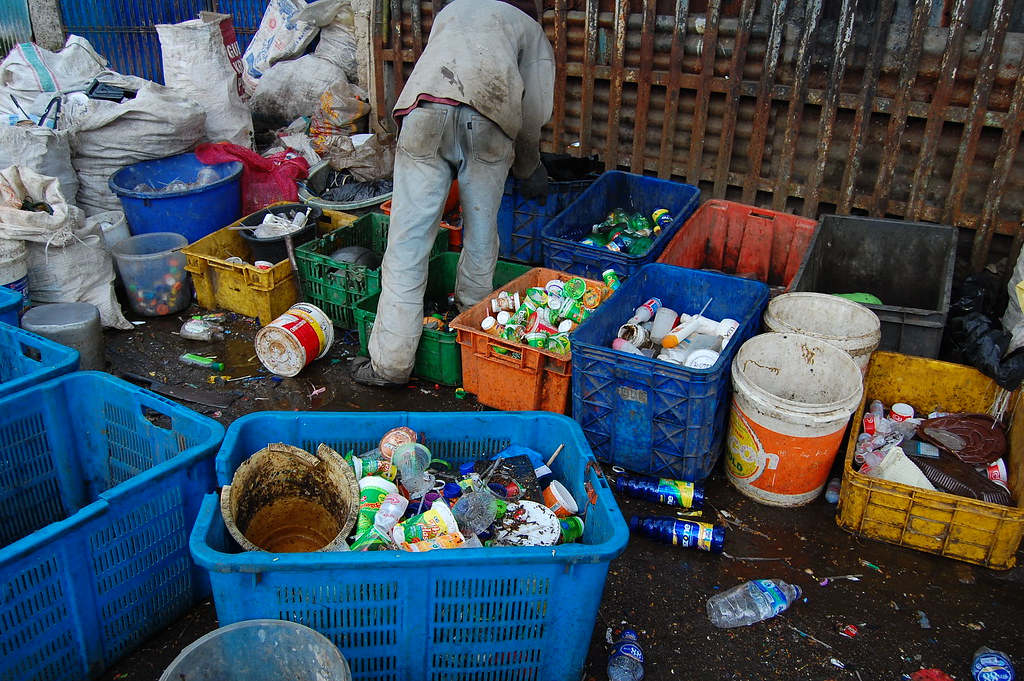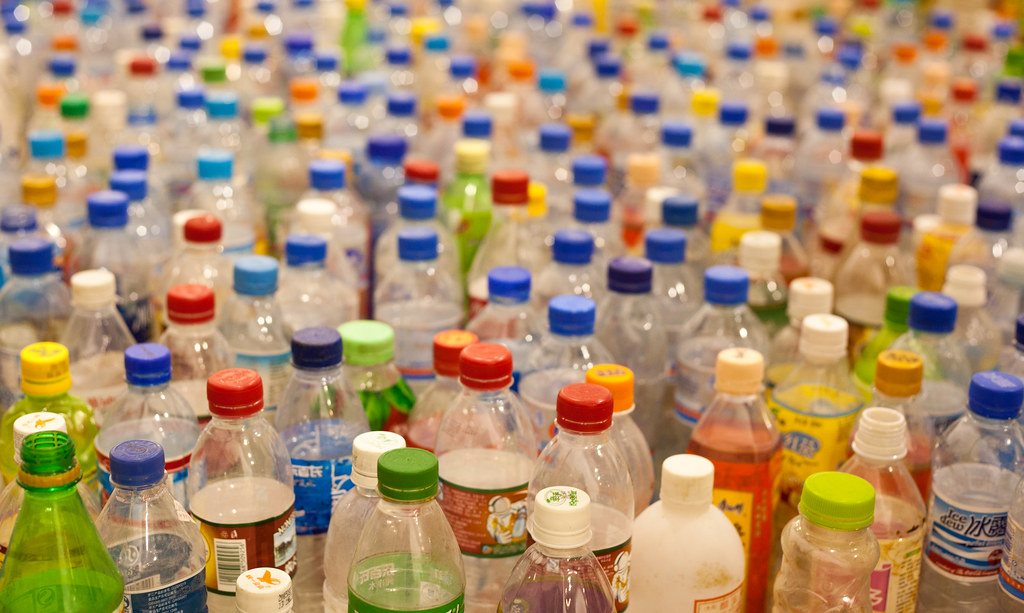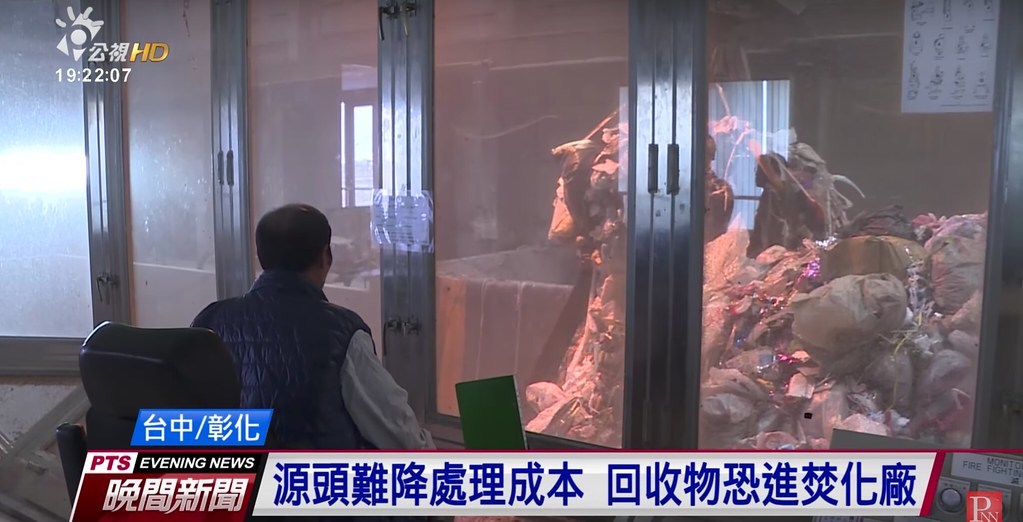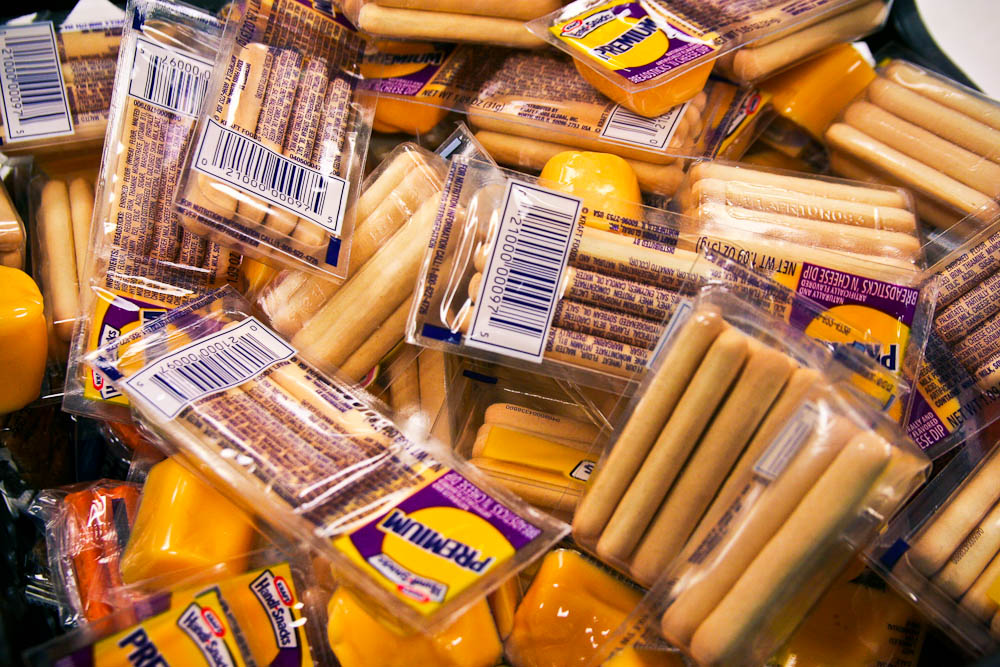TAIPEI, Taiwan, June 14, 2018 (TEIA)– In Taiwan, plastic garbage collected by local cleaning units can be classified into three categories: "regulated plastic containers", promulgated by the Taiwan Environmental Protection Administration (EPA) [1]; "miscellaneous plastics", which are mostly hard plastics; and "clean plastic bags".
The versatile plastic garbage can be heated to high values and is rich in chlorine and heavy metals. Incinerating the plastic garbage shortens the furnace's lifetime and produces toxic pollutants such as dioxins and dioxin-like compounds. However, there are challenges to recycling too. For example, the current recycling process degrades materials that make plastics useful. Recycling plastics requires high temperatures to melt the material, and it is the heat that leads to the material degradation. Hsieh Ho-Lin (謝和霖), Secretary-General of Taiwan Watch Institute, calls our attentions to ongoing recycled plastic garbage being incinerated despite local residents' efforts.

High Processing Cost Awes Business' Interest in Recycling Plastic Garbage
Plastic products are found everywhere, but plastic containers is the only category that the Taiwan EPA says can be recycled. Plastic containers include bottles, cans, and thin plate containers—such as trays and food wrappers. Other kinds of plastic products are not mandated by the Taiwan EPA—in other words, producers are not obliged to pay recycling, clearance and disposal fees. Meanwhile, local cleaning units do take up certain plastics garbage, called miscellaneous plastics. Its recycle mechanism heavily relies on the free market; however, hard plastic products are more preferred within this category. Besides aforementioned categories, clean plastic bags are required to be recycled due to excessive use in Taiwan.
Hsieh asserts that PET bottles and milk cartons are favorable to the recycling industry. Their homogeneities and large quantities make them apples of the business owner's eye. Other types of plastic garbage are different in compositions, categories, and physical forms, and this makes them more difficult to deal with. Hence, the majority of plastic garbage is just left in the recycle yard, waiting to be incinerated. Hsieh has heard that the Recycling Fund Management Board subsidizes recycling businesses to crush thin plastic garbage into pieces and send it for incineration instead of recycling.
In Taiwan, 18 local businesses are entitled to process plastic recycling and each of them has its specialized materials. Unlike the pessimistic observations from environmental groups, the Recycling Fund Management Board claims that Taiwan recycles up to 84% of plastics.
Notwithstanding 5.4 Billion PET Bottles Recycled Annually, Refilling/ Remaking Recycled PET Bottles Forbidden by Local Law

Relatively speaking, PET bottles and milk cartons are homogeneous and numerous, which make them popular. A survey conducted by the Recycling Fund Management Board indicates that 5.4 billion PET bottles were recycled last year. Hsu Yung-Hsing (許永興), Executive Secretary of Recycling Fund Management Board, says that a local food safety law restricts PET bottles from being recycled into new PET bottles. Pelletizing PET is a popular way to recycle the bottles and is a good exporting business. It is favored by soft drink companies, such as Coca Cola, and can be made into quality blankets and sport jerseys.
Nevertheless, according to Hsieh, reprocessing plastics requires high temperatures to melt the material. The heat breaks and shortens the plastic's molecular link, thus yellowing and weakening the plastic and making it lose its color. Adding new materials or degrading for other usage are common when reusing the plastics. A new PET bottle would have to be 70% new material and 30% recycled.
Sorting Plastic Wrap Cleans up Hesitation in Categorizing the Wrappers
Hsieh reminds us that there are fundamental differences between types of thin plate containers, used as trays and food wrappers, even though they share a similar physical form. PS, PET, PVC, and PLA [2] are commonly used materials in the market. Mixing these materials in recycling makes processing a daunting task and draws back recycling business owners' interests. Even if with the aid of automatic categorizing devices, such as Mechanical and Biological Treatment (MBT), Hsieh worries that it is still difficult to correctly categorize the plastics.
Hsu comments that thin plate containers being made from different materials does not matter for recycling in Taiwan. The key is how to separate these different materials. A couple of years ago, local businesses introduced equipment with near-infrared sensor to separate different plastic materials based on spectrum from Germany. It has greatly increased recycling speed and accuracy compared to that of humans.
As for reducing plastic usage, voluntary actions and government actions on plastic reducing are taking place. In addition to reducing one-time use plastic products, Hsieh believes simplifying and detoxifying plastic material aided by applicable public policies can be a feasible solution. If we simplify the material first, then the recycling process will become simple.
Hsieh recommends "reverse recycling" thin plate plastics, starting with wholesalers. Wholesalers and chain stores can choose more durable materials for food wrappers, then encourage shoppers to bring those containers back to the shops. With proper sterilization and sanitation, these thin plastic containers can be reused. Hsieh feels that raw ingredients that are stored in these containers need to be cooked anyway, therefore using recycled thin plastic containers should not cause any food safety and sanitation concerns.
With regard to biodegradable plastic, PLA, only one local company, Da Fon (大豐), is well-equipped to recycle. Hsieh says that PLA loses its biodegradable feature if it is mixed with other materials.
Turning Plastic Bags, Miscellaneous Plastics, and Clothing into Alternative Fuels: A Better Deal for Us
Technology advancement on reusing plastics is an ongoing procedure. Hsieh holds that reducing the use of plastic products is the most environment-friendly action. Recycle should be the second priority. When recycling plastic garbage, particularly if the materials cannot be reused, we should at least ban the use of chlorine-rich plastics and inks to minimize toxic additives such as heavy metal. In this way, the non-profitable plastics can be re-heated and can become alternative fuels in solid, liquid, or gas form. This method is far more energy-efficient than sending plastics into the furnace.

Indeed, Lai Yin-Yin (賴瑩瑩), Director of Department of Waste Management, Taiwan EPA, says that only clean plastic bags are currently being recycled. If all plastic bags, miscellaneous plastics, and clothing can be turned into alternative fuels would be a good way of reuse. However, local alternative fuel users are small in number, mainly from the pulp and paper industry; for example Cheng Loong Corp. (正隆), YFY Inc. (永豐餘), Kuan Yuan Paper (廣源), etc. The Taiwan EPA is working on promoting the use of alternative fuels to other boiler users.
To make the garbage a suitable alternative fuel, dechlorination and minimizing the use of heavy metals in plastic should be implemented, says Hsieh. Food wrappers are the most commonly produced plastic garbage in our everyday life. According to Hsieh, synthesized materials are widely used in food wrappers, such as wrapping for frozen dumplings or pastries, because they are good for making the wrappers airtight. Food vendors often use a coat of PVDC, a chlorine-rich plastic, coupled with colorful and vivid packing outer wrap colored by printing ink. Burning PVDC releases dioxins and dioxin-like compounds and the ink can be rich in chlorine and heavy metals—releasing toxic pollutants.
Hsieh says the government should regulate food wrapping materials by, among other things, making it compulsory to use chlorine- and heavy metal-free materials. Although these materials cannot be recycled, they can be turned into alternative fuels. This is significantly more energy- efficient than sending the plastics into furnaces.

The Bureau of Environmental Inspection, Taiwan EPA, which is in charge of managing garbage furnaces, counted 6.6 million tons of general waste, plastic (16%), paper (36%), kitchen waste (39%), metal (0.5%), glass (0.9%), and others (8%) incinerated in 2016. Current in-use heating value is set at 2,200 to 2,500 kcal/kg; however, heating plastics takes up 4,000 to 5,000 kcal/kg. Hsieh warns that this high heating value of plastics not only reduces the furnace's capacity, but it also damages the furnaces. Gas from chlorine, dioxins and dioxin-like compounds and hydrochloric acid is released when the waste is incinerated, causing the furnace to malfunction. A malfunctioned furnace can release more harmful pollutants than a functioning one.
Wu Sheng-Jong (吳盛忠), Director of the Bureau of Environmental Inspection, Taiwan EPA, confirms that "if heating value is high, the manageable amount would be small" when incinerating plastic garbage with furnaces. Wu further notes that the trend of elaborating garbage process surely include turning them into alternative fuels. By using machines to break down garbage, then filter out metal and glass, the remaining plastics, kitchen wastes, and paper can be dehydrated and then grinded into pellets. These pellets can be used as an alternative fuel, or even turned into gasified alternative fuels.






